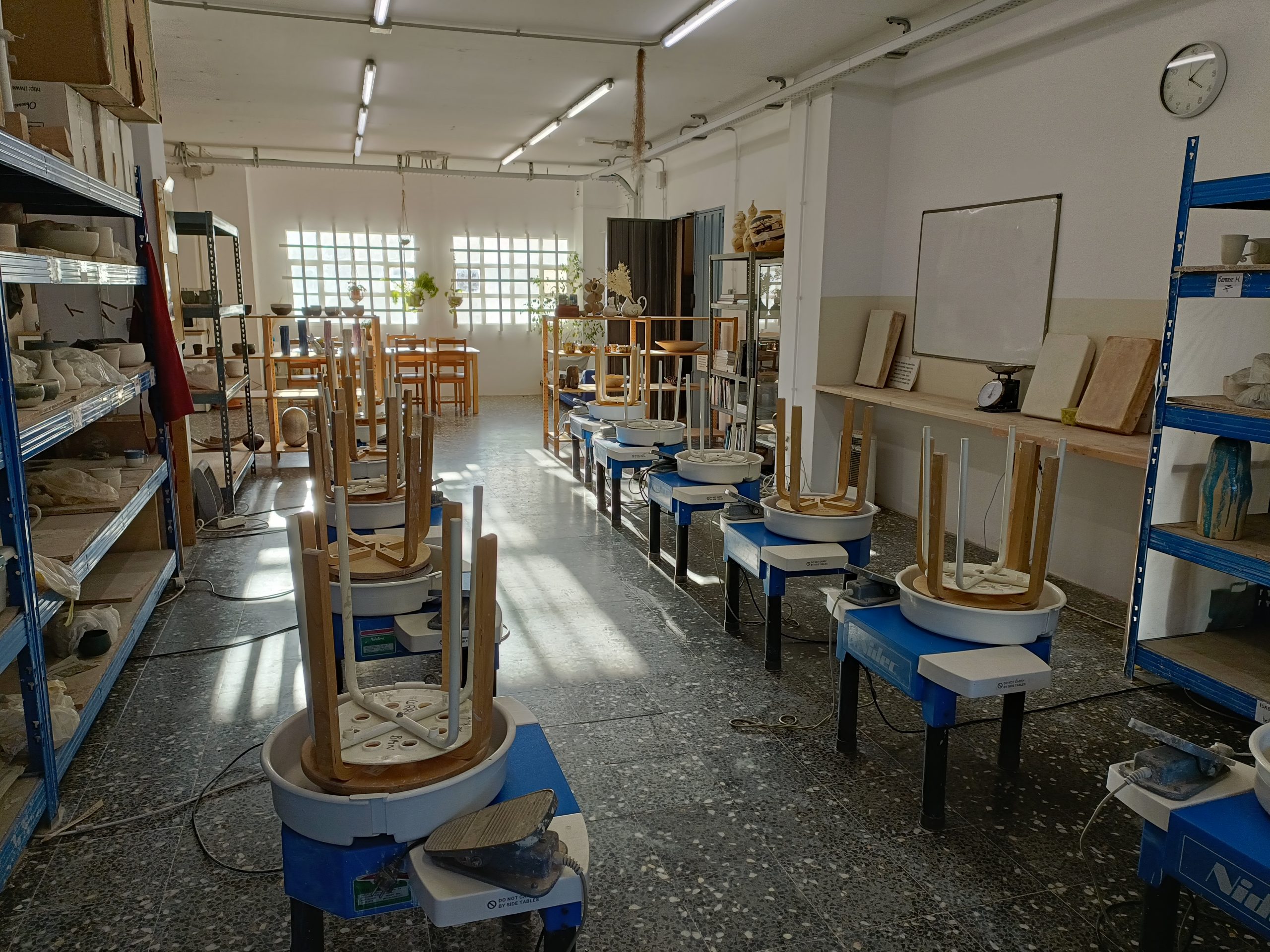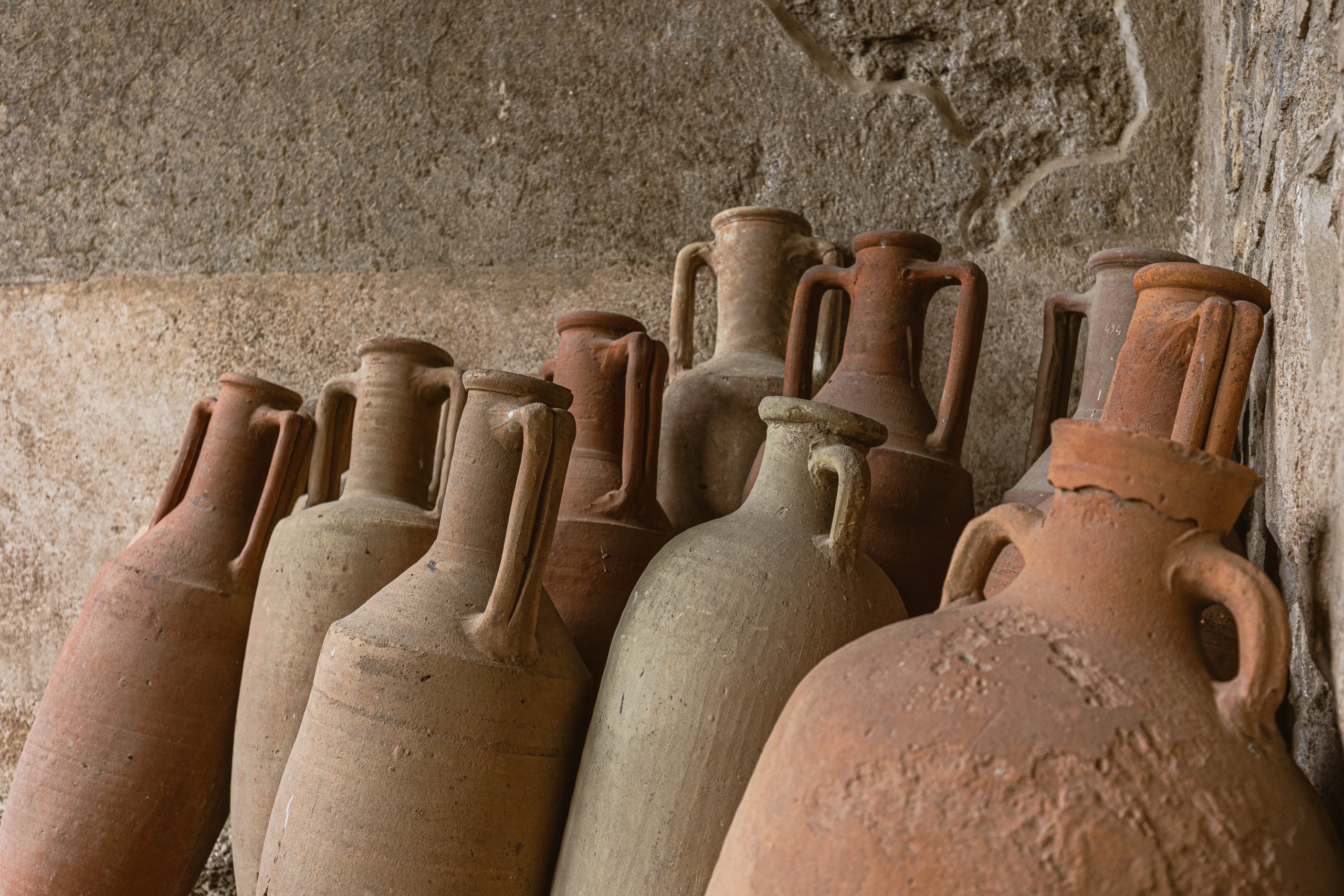Exploring Barcelona ceramics: a journey from past to present
Barcelona has a rich history of ceramics that spans centuries, blending tradition and innovation. In this blog, we’ll delve into the evolution of Barcelona ceramics, from ancient times to the vibrant contemporary scene, with a focus on our school and the pottery classes we offer in Barcelona.
The ancient roots of Barcelona ceramics
Barcelona’s deep-rooted connection to ceramics can be traced back to its earliest days during the Roman era, when the city was known as Barcino. The archaeological evidence of this historical tie lies in the fragments of pottery discovered in the ancient settlement. These remnants, unearthed through meticulous excavations, offer a tangible link to the everyday lives and cultural practices of the Roman inhabitants of Barcino.
The pottery fragments tell a story of domestic life, trade, and craftsmanship in this ancient Roman outpost. They reveal not only the functional aspects of ceramics, such as storage containers and household utensils, but also the artistic sensibilities of the people who shaped and adorned these vessels. The patterns and styles found in these fragments provide a glimpse into the aesthetic preferences and cultural influences of the Roman community that thrived in Barcelona centuries ago.
Barcelona’s Roman pottery from the ancient settlement of Barcino is on display at MUHBA – El Call, a museum focused on the history of the city.
Barcelona ceramics in the medieval period & Renaissance
The period spanning from the 5th to the 15th century saw a confluence of various cultural influences that shaped the ceramics of medieval Barcelona. The Gothic Quarter, a central and historic neighbourhood, was a focal point for medieval ceramics production. Artisans and potters set up workshops in this area, creating a bustling hub for the creation and trade of pottery.
Everyday items such as storage jars, cooking vessels, and plates were crafted for practical use. These utilitarian pieces often featured simple yet sturdy designs, catering to the needs of a growing urban population.
In addition to functional ware, decorative ceramics flourished. The influence of Islamic designs was widespread, and potters began incorporating elements such as geometric patterns, stylized floral motifs, and calligraphy into their creations. These decorative pieces were not only functional but also served as expressions of artistic and cultural identity.
These developments in medieval ceramics laid the groundwork for the flourishing Barcelona ceramics scene during the Renaissance.The Renaissance brought a renewed interest in classical forms and artistic excellence, influencing Barcelona’s ceramic scene. The city’s proximity to the Mediterranean facilitated trade, allowing artisans to experiment with new materials and techniques. The result was a blossoming of exquisite ceramics that adorned both homes and public spaces, and DissenyHub, the Barcelona design museum, has an excellent collection of pieces from this period.
Ceramics and architecture in Barcelona
Antoni Gaudí, the renowned Catalan architect, left an indelible mark on the cityscape of Barcelona, and his use of ceramics in his architectural masterpieces is a distinctive aspect of his work. Gaudí’s innovative and organic architectural style, often referred to as Modernisme, seamlessly incorporated ceramics, giving Barcelona some of its most iconic and visually striking landmarks.
Gaudí’s choice to incorporate ceramics into his designs wasn’t merely an aesthetic decision; it was a conscious effort to celebrate Catalan identity. By using traditional ceramic techniques and drawing inspiration from local craftsmanship, Gaudí infused his works with a sense of regional pride. The use of trencadís, in particular, became synonymous with Gaudí’s architectural language and remains an iconic symbol of Catalan Modernisme. Today, many ceramicists find inspiration in Gaudí’s use of colour, texture, and form, contributing to the dynamic and ever-evolving Barcelona ceramics landscape.

Contemporary ceramics in Barcelona
This artistic legacy continues to influence contemporary ceramic artists and architects in Barcelona. From nameless Roman potters to famous creatives like Gaudí, the city has fostered an innovative approach to ceramics and inspired subsequent generations to explore new possibilities in design and construction.
Nowadays, Barcelona is experiencing a renaissance in contemporary ceramics. Local ceramicists draw inspiration from the city’s rich history while infusing their work with modern techniques and innovative designs. The Barcelona ceramics community has become a dynamic and diverse melting pot of creativity.
Our school holds long term classes and short term, intensive courses for anyone seeking to explore the art of pottery in a city brimming with creative energy.
Pottery classes in Barcelona
Weekly class in handbuilding
Perfect for beginners, this 2h weekly class provides a hands-on introduction to the fundamentals of pottery: understand the material and how to work with it. From making pinch pots to slab-building, students are guided by experienced instructors who will not only teach you a wide variety of techniques but also help you to create the pieces you’ve imagined.
Weekly class in wheelthrowing
For those looking to deepen their skills, the wheel-throwing class teaches you the skills and techniques you need to create pieces on the wheel. This challenging Students have the opportunity to experiment with glazes and surface treatments, adding a personal touch to their creations.
Intensive courses
Our school also runs intensive weekend and weeklong pottery courses in Barcelona. Participants spend a weekend or a full week in our studio, building their skills and deepening their understanding of clay as a medium. Full days in the studio will push your pottery abilities to the next level.
Why choose to study ceramics at our studio?
– Expert instructors:
The school boasts a team of skilled and passionate instructors with extensive experience in both traditional and contemporary ceramic arts.
– Inspirational studio space:
Our studio offers a conducive environment for artistic exploration. Natural light, ample workspace, and a variety of professional equipment ensure that every student can unleash their creativity during our pottery classes.
– Community and collaboration:
Beyond our Barcelona pottery classes, the school fosters a sense of community among its students, coworkers and artists. Workshops, exhibitions, and collaborative projects create opportunities for networking and artistic growth.
The history of Barcelona ceramics is a story of evolution, from ancient Roman pottery to the innovative designs of contemporary ceramicists. Sign up to a pottery class in our studio and be a part of Barcelona’s ceramic legacy, where each piece crafted tells a unique story of tradition, innovation, and the boundless possibilities of clay.



